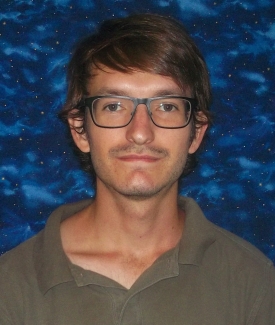JILA graduate student John Robinson won the Student Paper Competition at the 2018 IEEE International Frequency Control Symposium (IFCS).
Finalists for the Student Paper Competition were selected by abstracts, and final judgements were based on poster presentations.
The competition was divided into six groups. Robinson was competing in the Optical Frequency Standards and Applications group. Robinson’s winning poster, entitled “Thermal Noise Limited Optical Cavity at 4 Kelvin: Paving the Way for the Next Generation Optical Clock”, was awarded for “advancing the state of the art in cryogenic cavity performance.”
“This has been a wonderful team effort and I'm deeply indebted to each and every one of you. I hope to continue this great fun and joy of working in the lab. It truly is the best thing in the world,” said Robinson to his labmates upon winning the prize. Robinson, currently a fourth year gradaute student, works in the Ye lab at JILA.
The 2018 IEEE IFCS was held 21-24 May in Olympic Valley, CA.
JILA Fellow Jun Ye was also in attendance, and was awarded the I. I. Rabi Award for “For the development of stable, reproducible, and accurate atomic clocks based on optical lattices, and the use of those clocks to probe fundamental atomic interactions and quantum many-body systems.”



 The Physics Frontiers Centers (PFC) program supports university-based centers and institutes where the collective efforts of a larger group of individuals can enable transformational advances in the most promising research areas. The program is designed to foster major breakthroughs at the intellectual frontiers of physics by providing needed resources such as combinations of talents, skills, disciplines, and/or specialized infrastructure, not usually available to individual investigators or small groups, in an environment in which the collective efforts of the larger group can be shown to be seminal to promoting significant progress in the science and the education of students. PFCs also include creative, substantive activities aimed at enhancing education, broadening participation of traditionally underrepresented groups, and outreach to the scientific community and general public.
The Physics Frontiers Centers (PFC) program supports university-based centers and institutes where the collective efforts of a larger group of individuals can enable transformational advances in the most promising research areas. The program is designed to foster major breakthroughs at the intellectual frontiers of physics by providing needed resources such as combinations of talents, skills, disciplines, and/or specialized infrastructure, not usually available to individual investigators or small groups, in an environment in which the collective efforts of the larger group can be shown to be seminal to promoting significant progress in the science and the education of students. PFCs also include creative, substantive activities aimed at enhancing education, broadening participation of traditionally underrepresented groups, and outreach to the scientific community and general public.